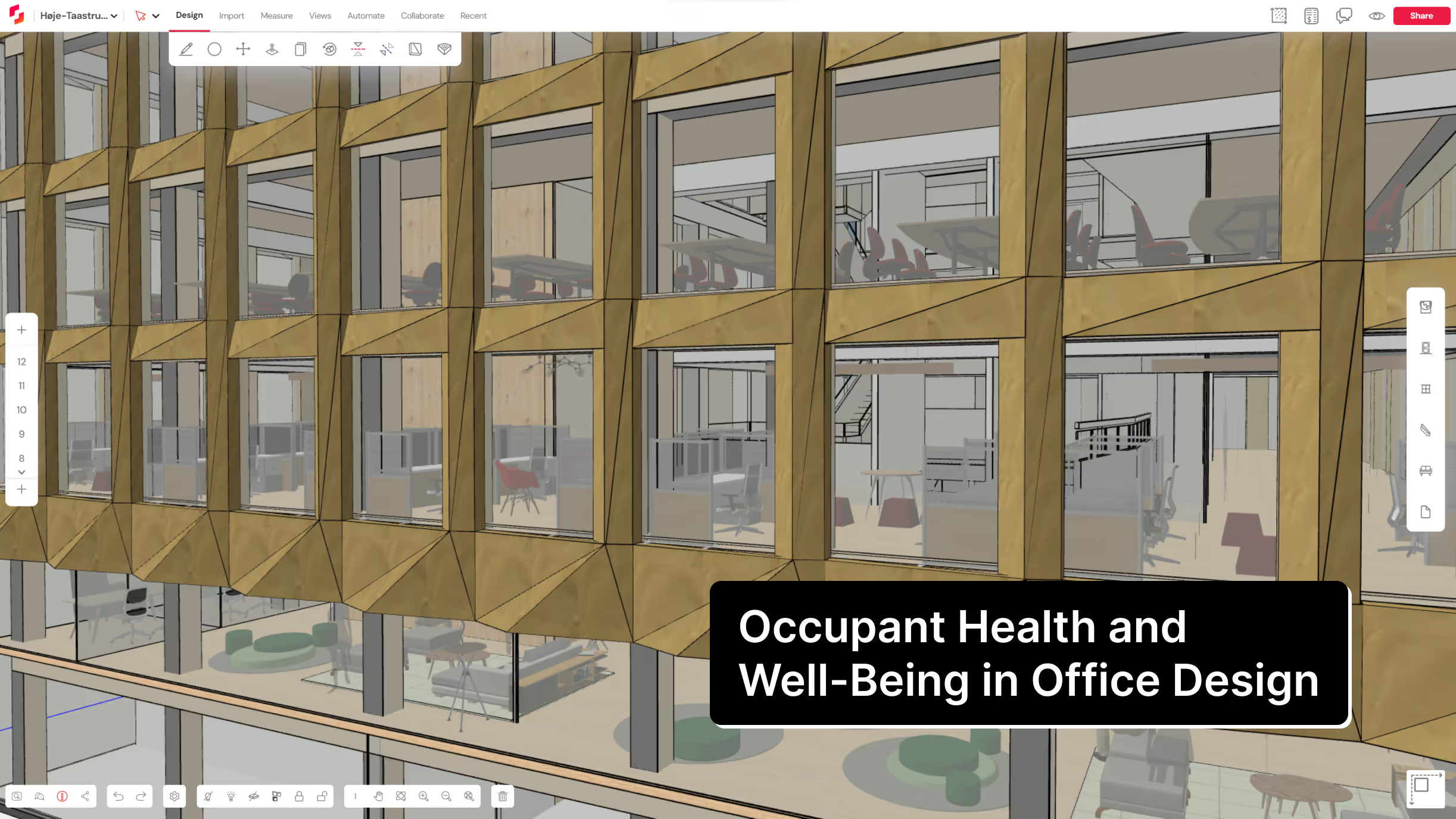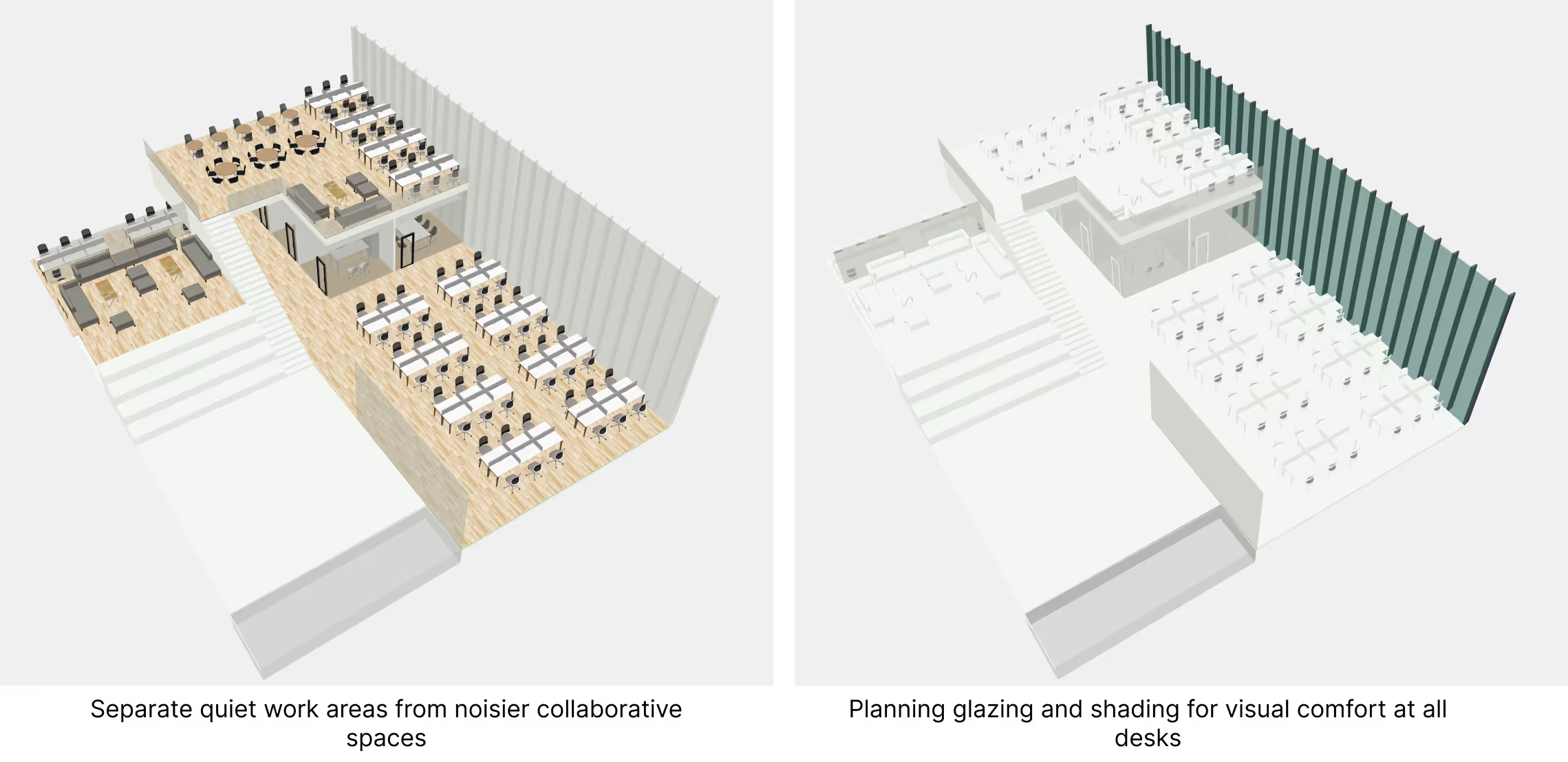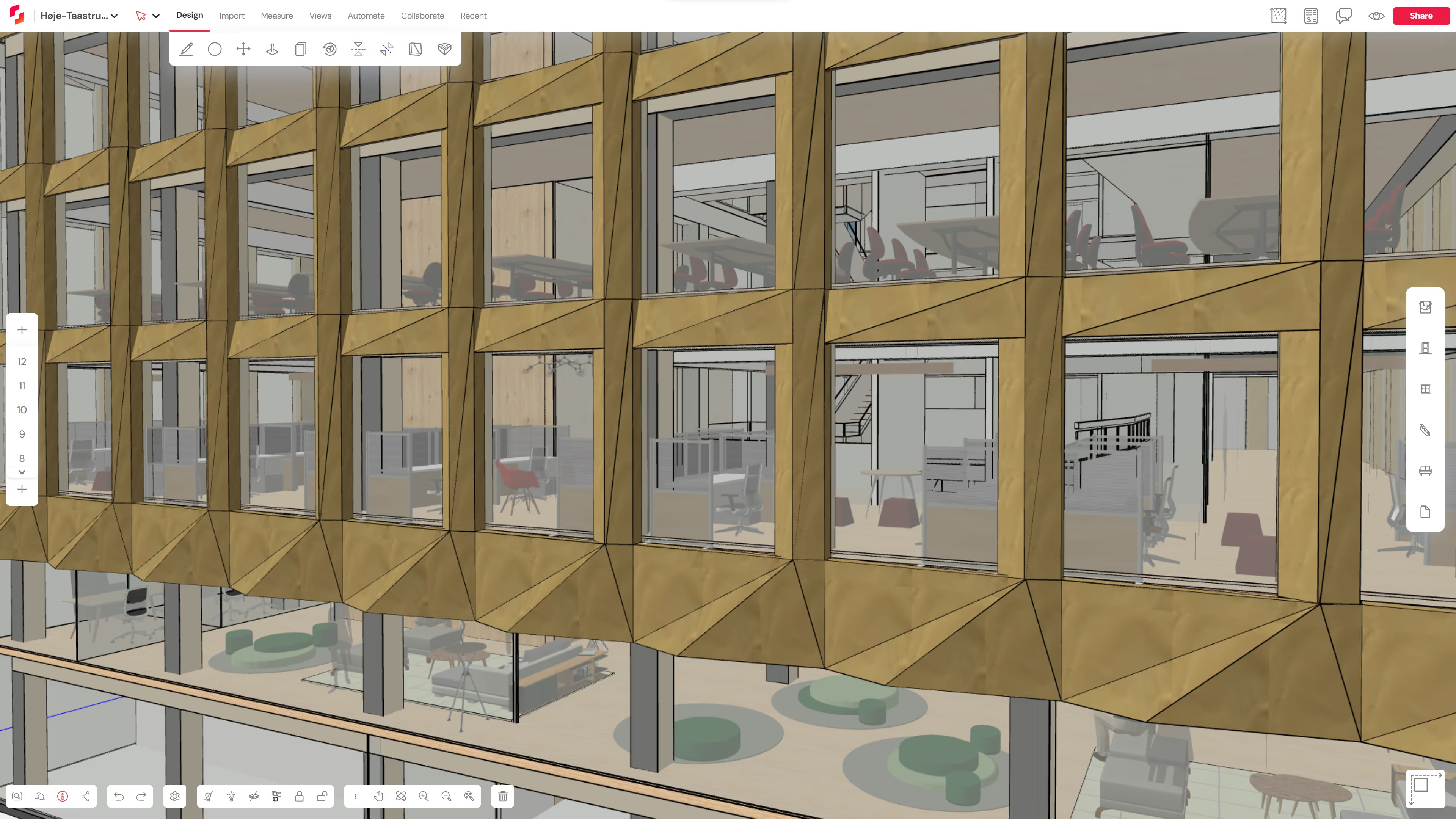Occupant health and well-being in office design

The design of office spaces can significantly impact the health and well-being of their occupants. The proliferation of convenient virtual business technologies and hybrid work options, while being beneficial in many ways, still cause a largely sedentary lifestyle. The WELL standards, governed by the International WELL Building Institute (IWBI) provide a performance-based measurable tool to analyze and improve built environments towards achieving better health and well-being for occupants. This article explores five design parameters that can improve health and well-being
- Indoor air quality
- Visual Comfort
- Thermal and Acoustic Comfort
- Physical wellness
- Mental wellness
For example, visual comfort can be enhanced through illumination at desk level, occupant control of lighting, color tone settings, and connectivity to exterior greens or skylines. Good design can result in calmer spaces and improve productivity.


Indoor air quality
Humans breathe more than 15,000 liters of air every day and is a primary source of exposure to pollutants and diseases. Air Quality Index (AQI) represents the concentrations of pollutants at a given location. Indoor air contaminants enter the air not only through smoking, stoves, and outdoor air pollution but also from building materials, furnishings, fabrics, cleaning products, personal care products, and air fresheners. Certain materials emit volatile organic compounds (VOCs) that impair the quality of indoor air. AQI can be improved through good ventilation systems and the careful choice of interior specifications.
Ventilation reduces the spread of airborne pathogens in multi-user office spaces by diluting air contaminants with fresh clean air. Pollution-causing spaces in an office, like smoking areas, should be designated separately and set at negative pressure to prevent smoke from mixing with cleaner office air. The smoke room should be vented out through a separate line.

Materials used in the interiors should be toxin-free, paints should be VOC-free, and cleaning agents should be eco-certified. Materials that tend to release VOC should not be used in heavy occupant areas. Activated charcoal filters can reduce the exposure of occupants to VOCs. Providing one plant per 100 square feet area of office space reduces carbon dioxide and toxin levels in the air.
Acoustic and Thermal comfort
Continual exposure to high-decibel sounds has a deteriorating impact on the long-term mental and physical health of occupants. In the short term, it could affect the ability to concentrate on work. Collaborative work spaces may function well at medium-level sound whereas private work desks may require a lower decibel level. Office spaces should be zoned to segregate noisy activity spaces from quiet work areas or pods. Designers may specify noise-absorbing barriers in areas of focussed work, add carpeting and floor rugs to absorb indoor noise, and seal the edges of windows and doors to cut off exterior noise.

Høje-Taastrup City Hall, PLH Arkitekter: Work areas visually connected and acoustically separated across different floors
Thermal comfort is influenced by temperature, humidity, air movement, clothing worn, and metabolic rate. Its perception is subjective, varying from occupant to occupant. Occupants should be able to control the thermal settings in their immediate environment.
Visual Comfort
Given that people spend much of their waking day in an office space, the quality and quantity of lighting in the office environment are critical to aligning with the circadian rhythm. Insufficient illumination or improper lighting design can disrupt the circadian phase leading to lifestyle diseases, depression, and metabolic disorders. Hence, adequate illumination of the work plane which can be assessed through spatial daylight autonomy (SDA) is an important metric to study in the design phase.
At the same time, annual daylight exposure (ADE or ASE) is to be studied to analyze the percentage of spaces receiving excessive light that creates unwanted glare. To ensure a comfortable light setting, regularly occupied spaces should be at most ten times brighter or darker than adjacent circulation spaces, thus ensuring occupants are not experiencing a high contrast. Excessive sunlight can be controlled using sun shading or second skin.

Høje-Taastrup City Hall, PLH Arkitekter: Workstations are placed by the large windows providing plenty of daylight
Another aspect of visual comfort is to accommodate the personal preferences of occupants. It is essential to allow regular occupants to have control of light levels and color tones of electric lights in their immediate environment.
Physical wellness
Great office spaces can encourage fitness and movement through design features. For example, NBBJ’s design of Samsung’s Silicon Valley headquarters includes green walkways that invite occupants to socialize, relax or just walk to another team for collaboration. Circulation that is inviting, like a well-designed atrium or a wide staircase in an open central space can encourage occupants to use them regularly. Designers can also consider integrating music, artwork, or natural elements, like water features and green areas into transition spaces. These spaces have to be well-lit, with at least 200 lux when in use.
Architects can also allocate spaces for exercise within the office building and include amenities that promote active mobility in commutes. These include providing safe bicycle parking, on-site showers and changing rooms.
The ergonomic design of workstations plays an important role in promoting comfortable postures and reducing strain. Sit-stand desks, standing meeting desks, treadmill desks, and other agile workspaces can lower the amount of time employees spend seated. To reduce strain on the eyes, workstations may allow views to distant points by virtue of which the occupant uses their eyes in different focal lengths.
.png)
Høje-Taastrup City Hall, PLH Arkitekter: Central staircase activates the atrium and provides a space for rest
Mental wellness
Office interiors can support the mental wellness needs of their employees by providing a connection to nature or natural elements. The connection can be through touch, sounds, and views of plants, water, sunlight, etc. Additionally, indirect connections to nature can be provided through the use of natural materials, patterns, colors, or images.
.png)
Designers may create opportunities for micro-breaks during the workday through break-out spaces exclusively for relaxation and restoration. Offices must also contain a designated employee dining area with supportive pantry amenities.
Sign up to try Snaptrude for free or book a demo for your team today!


